In today's technology-driven era, a large emphasis is placed on the accumulation of -- and on the imparting of -- knowledge. This means we not only have to know more than ever, but now we must also apply more than we have ever needed to before.
Because of this, the use of supplemental nootropics, or "smart drugs", to enhance our brain power is becoming increasingly popular, with many people turning to these products in an attempt to optimise the brain. In this article we will focus on one of these "smart drugs" known as Noopept.
What is Noopept?
Noopept, or N-phenylacetyl-L-prolylglycine is a proline-containing dipeptide that is an amino acid analogue. It was originally designed as an analog of another very popular nootropic, Piracetam.[1] Despite being of similar nature to Piracetam, Noopept is technically not a part of the racetam family as it lacks a very important structural component (a 2-oxo-pyrrolidine skeleton to be precise), however its effects and mechanism of action (how it works) is similar to Piracetam, so it is often grouped together with them.[1]
Some of these products are difficult to find, so check PricePlow's listings below and sign up for alerts on this page before digging deeper.
Wait, Noopept is a peptide?
For those of you who are familiar with products like "Deer Antler", you will know that the polypeptides that they contain (IGF-1, in Deer Antler's case) cannot be used by the body in the form they are ingested.[2] This is because the polypeptides are too large to enter the bloodstream, and so they must be broken down into their smaller groups of amino acids and absorbed that way (the same is true for protein you eat from food sources).[2]
The problem with this is that once they are broken down, they can no longer be used for the function in which you had hoped for and instead, they are redirected for use elsewhere.[2]
Where Noopept differs is that it is a dipeptide, which is two ('di') amino acids joined together by a peptide bond. In Noopept's case, the two amino acids are Glycine and Proline.[1]
Because dipeptides are smaller than polypeptides ('di' meaning two and 'poly' meaning many), dipeptides have no trouble getting absorbed in the state they are in and as such, make it into circulation intact.[2]
The smarts are in the Cycloprolylglycine
However, despite making it into absorption, Noopept is also rapidly broken down, where its major metabolite Cycloprolylglycine is thought to be the real driving factor behind Noopept's brain-enhancing capabilities.
To keep this article simple and standardized, we'll just keep referring to cycloprolylglycine as Noopept.[3,4] Just note that this metabolite may doing the actual heavy lifting for our improved cognitive function discussed below.
Why do we bring this up?
It's important to know because many online articles claim that Noopept has poor bioavailability (since it is a peptide), but they neglect to note that dipeptides actually have very good bioavailability due to the size of the molecule, and so Noopept has no trouble entering the bloodstream for transportation to the brain.
Now that that's settled, let's talk about its effects once it gets there.
Noopept's effects in "brain-enhancing" (all of them!)
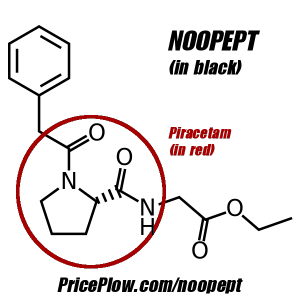
Noopept is similar to piracetam, but is taken in far smaller doses, and we ultimately like it much better (personal / anecdotal opinion).
Noopept and other nootropics are able to exert their effects directly on the brain because they can readily pass through the blood brain barrier.[1] Due to this, nootropics are often given the terms "brain enhancing" and "smart-drugs", although these could mean a lot of different things to a lot of different people.
For some people, the terms could imply greater focus for the task at hand (what people call "tunnel vision"), or for others it could mean enhanced memory formation, problem solving, fluidity of speech, or improved learning. Whatever your definition, all of them are correct as nootropics can have an impact on all of these areas.[5]
The question then arises, which areas does Noopept target and for what purpose will I want it for? After all, you want to choose the best nootropic for the right situation.
Noopept's effects are mostly observed in the areas of learning and memory with potential in both decreasing anxiety and increasing psychostimulation. This means that while it may help keep you awake through those late night study sessions, or calm you down before a presentation, its effects are best noticed during periods of learning when the need to remember facts, processes or bits of information is a necessity.[6,7]
Noopept Benefits
So let's take a look at each of Noopept's supposed benefits in a bit more detail.
-
Noopept on learning and memory
While learning and memory and not quite same thing, they are both interdependent, meaning that they rely on each other to function optimally.
You can think of learning as being the process in which you acquire new information; and with memory being a record of that process (and of the new information).
In other words, you need the learning to get the information, and you need the memory to retrieve it to pass the exam at the end of the semester.[8]
So let's take a look at the pathways in which Noopept impacts learning and memory:
- It appears to work on Glutamatergic receptors AMPA and NMDA, which are major learning pathways in humans.[9]
- Increase levels of Nerve Growth Factor (NGF) and Brain-Derived Neurotropic Factor (BDNF). These influence the production of new neurons and synapses as well as improve the growth and survival of already existing neurons. This aspect is an exciting prospect for the development of long term memory and improving cognitive health.[1,10]
- Increases acetylcholine levels in the brain.[1] Acetylcholine is often named "the learning neurotransmitter" and choline supplements that boost acetylcholine levels are popular to stack with Noopept.
Let's take a look at each aspect individually to see how Noopept influences them.
-
AMPA and NDMA Glutamatergic Receptors
Appears to work on Glutamatergic receptors AMPA and NMDA, which are major learning pathways in humans.
As mentioned earlier, Noopept has no trouble crossing the blood brain barrier (BBB) to perform its role within the body.[3] Once past the BBB, it can bind to the NMDA glutamatergic receptors which is important for a type of memory formation known as 'long term potentiation'.[11]
-
Long term potentiation (LTP)
LTP is a mechanism by which stable memories are formed within the human brain, and it is one of the reasons why some memories persist longer than others.[11] Long term potentiation occurs when calcium ions (triggered by NMDA binding) enter the postsynaptic spine, allowing for the strengthening of synapses between neurons [9,10].
However, NMDA activation only starts the process, but it requires another glutamate receptor to sustain it. This is where the AMPA receptors come into the equation, as these allow a more permanent structural change in the neural network to sustain the potentiation.[12] When a neuron has had LTP initiated, more AMPA receptors become present on the post-synaptic membrane, which allows for enhanced excitability. With more receptors, there is more firing and therefore memory enhancement.[11,12]
-
Spatial Memory
Additionally, Noopept's interactions with the NMDA receptor also allows for the enhancement of spatial memory.[13,14] This is is a cognitive process that is more commonly known as relational thinking or visual thinking.
A few examples of this are listed below:
- Whenever you drive from your house to your work, you use spatial memory to guide you.
- If you've ever been lost in your own town or city, then spatial memory has allowed you to visualize where your house would be in relation to where you are now.... hopefully allowing you to return home sooner rather than later.
- Have you ever told someone that a particular shop was a block away from where you are right now? You used spatial memory to visualize how far away that shop was so you could give an approximate distance.
- Solved a mathematical question in your head? Again, spatial memory allowed you to see those numbers and move them around.
- Ever tried putting suitcases or boxes in your car? Spatial memory allows you to decide if the space you are putting the suitcase or box into is big enough to fit it.
The above are everyday tasks that rely on a proper functioning spatial memory to perform well, but there are also careers where spatial reasoning may be a part of your everyday work life as well.
For example, a mechanical engineer visualising how moving parts work and operate together, a mathematician solving complex puzzles in their mind, a chemist visualising compounds based on chemical structures, or even a web/app designer designing a user interface.[14]
Point being, when your spatial memory is better optimized, life just generally goes along more smoothly.
-
-
Nerve Growth Factor and Brain-Derived Neurotropic Factor
As mentioned earlier:
Increase levels of Nerve Growth Factor (NGF) and Brain-Derived Neurotropic Factor (BDNF), which influence the production of new neurons and synapses as well as the growth and survival of already existing neurons. This aspect is an exciting prospect for the development of long term memory and improving cognitive health.
Memory can be divided into two stages: a protein synthesis independent phase (more commonly known as short term memory) and a protein synthesis dependant phase (more commonly known as long term memory).[13,16]
Short and Long Term Memory
![There are several ways of increasing BDNF. Nootropic use might also be one such way. Image courtesy Nature.com (Zuccato & Cattaeo)<sup>[25]</sup>](https://blog.priceplow.com/wp-content/uploads/brain-derived-neurotrophic-factor-300x281.jpg)
There are several ways of increasing BDNF. Nootropic use might also be one such way. Image courtesy Nature.com (Zuccato & Cattaeo)[25]
Short term memory lasts anywhere from seconds to hours, whereas long term memory is several hours up to days or years. BDNF (which Noopept increases) has been investigated for its potential as a protein synthesis product -- and that is essential for the long-term synaptic plasticity of the human brain.[17,18]
Recall above how AMPA activation moves more receptor sites to the membrane? This is known as a structural change in those neurons.[13] If we liken this to muscle building, then in order for muscle building to take place, there must be structural changes happening to create a bigger muscle, and for this structural change to happen, protein synthesis must occur (which is initiated when mTOR is activated).
In much the same way, BDNF triggers mTOR activation in the brain, allowing for structural changes to occur. In this case, more AMPA receptor sites begin appearing on the neuron surface.[13,17] These structural changes are what allow for long term memories to be formed after NMDA activation triggers the LTP process.[17]
-
Acetylcholine
From above:
Increases acetylcholine levels in the brain.
Noopept has a little data showing it is able to sensitize acetylcholine receptors to amplify its function.[1] Acetylcholine is known as a learning neurotransmitter, as its presence enhances the activity of cortical neurons which suppresses their synaptic transmission.[18]
The anti-blurring effect
![Improved acetylcholine utilization provides for an 'anti-blurring' effect so that new and old memories do not get confused. Image courtesy Dean Won<sup>[26]</sup>](https://blog.priceplow.com/wp-content/uploads/acetylcholine-300x189.png)
Improved acetylcholine utilization provides for an 'anti-blurring' effect so that new and old memories do not get confused. Image courtesy Dean Won[26]
At this point, you may be wondering how it is useful for memory if LTP relies on synaptic transmission to work. In this case, acetylcholine was only suppressive of synapses in which memory formation was sufficient, meaning that it stopped old information from being recalled when new information was being stored without compromising the integrity of old information.[18]
This is also important because it creates clear distinctions between memories so that there isn't any "blurring" of memories with other memories. The more acetylcholine activity, the better this function can work.[18]
Acetylcholine also works through NMDA receptors much like above, except in this case, it prevents the proteins that stop NMDA activation from doing their job, effectively allowing NMDA activation to occur for longer which increases the effect of learning and memory encoding.[18]
Learning and Memory: Putting it all together
- Noopept binds to NMDA and AMPA receptors which allow for long term potentiation to occur -- and for it to be sustained respectively.[11]
- BDNF triggers more AMPA receptors to be formed on a neuron, thus allowing for increased memory coding sites.[11,12].
- Acetylcholine stops the proteins that usually limit NMDA activation, and therefore allowing for memory encoding to persist longer.[18] It also ensures memories do not "blur" into each other so that you can clearly distinct one memory from the next.[18]
All of these together allow for Noopept to provide enhanced memory formation, storage, and retrieval.
-
Anti-Anxiety Benefits?
Noopept does appear to have anxiolytic effects, as some trials have demonstrated its ability to lower markers of anxiety. However, the exact mechanism is not yet fully understood.[19,20]
What we can say is that there is potential there for a reduction in anxiety, however if you suffer from it or need something that works directly on anxiety, it would be better to seek professional help.
Noopept Side Effects
Similar to some other nootropics that work via choline-based mechanisms, the biggest potential issue with Noopept when taken at standard doses is with headaches.
Because of this, it's often touted that Choline is a necessary supplement to use alongside Noopept, usually to "avoid potential headaches and brain fog that can be brought upon by Noopept use". Is there any merit to its use?
There are two prevailing theories on why this is:
-
Choline depletion (most likely)
One theory is that the choline-sensitizing effect of Noopept depletes normal levels of choline in the brain (as Noopept seems to speed up the conversion of choline into acetylcholine), which can trigger headaches.[1]
-
Excessive glutamate activity? (less likely)
Another possible explanation for the headaches is that excessive glutamate activity in the brain triggers the headaches.
This idea stemmed from anecdotal reports of MSG-containing food triggering headaches (glutamate being a large component of MSG). However, researchers found no such signs of headaches or other supposed MSG symptoms when they tested supposed MSG-sensitive participants with MSG containing food.[21]
From the two supposed mechanisms, it would seem that the first is more correct, as anecdotally, the reports of headaches stop once choline is introduced. So, we always recommend a choline-based supplement alongside Noopept. This is discussed further in the stacking section.
General Toxicity?
It's important to note that there aren't any seriously intense toxicity studies performed on Noopept. The best we can state is that a study showed 1.8x less side effects in 20mg of Noopept vs. 1200mg of piracetam.[22]
Point being, the reasonable doses of Noopept discussed on this page appear safe from the research cited, but we urge you not to get anywhere outside of the 30mg/day range unless directed by a doctor. Otherwise, you're on your own, and that's not a good place to be when you're working with brain function.
It goes without saying that no statements on this page have been approved by the FDA, and you must get your doctor's approval to begin any new diet, supplement, or nootropic program. If you experience side effects, cease use immediately.
Noopept dosage: how much is enough?
The most common dosage for Noopept is 10mg, 2x or 3x daily.
However, taking the entire 20mg or 30mg dose in bolus immediately prior to a mentally stimulating activity is also another option.
Noopept takes time to "work", as increasing receptor activation and density (through protein synthesis) takes time to take effect. People may also be sensitive to Noopept's effects (particularly its stimulation and effects on focus) and therefore taking the entire 30mg bolus may be of benefit to those who experience an acute effect. Either way, both options are viable.
As mentioned above, we recommend taking a choline supplement at least once during the day too.
The safe bet is to start with a single 10-20mg dose with 250mg citicoline, get to work, and assess your productivity later.
When to take Noopept
Noopept can be taken at any time of the day, either with food or without. There does not seem to be a difference in terms of interference with absorption whether users are on an empty stomach or not.
State-Dependent Memory: Play like you practice
Also, note that the phenomena of state-dependent memory exists. This is a situation where memory retrieval works best when you are in the same state of consciousness as when you formed the memory.[27]
Point being, don't just take a nootropic like this for the first time during your big exam. Take it before you study, and take it before the exam.
But even before you do that, test things out on something of lesser importance, such as a paper or a quiz (or whatever is relevant to your work/life situation).
What is the best Noopept? Who is the best Noopept vendor?
Since the field of nootropics is rapidly growing, we've seen dozens of fly-by-night companies appear in this niche, which poses some risk. You don't always know where they're getting their raw materials from, nor do you know if they're really testing them. Unfortunately, these "gray area markets" require your trust more than anything else.
As such, we stick with certain tried and true brands that we know perform third-party batch testing on every single incoming raw material lot. In the sports nutrition world, one such company is SNS, who recently launched Noopept XT in the spring of 2015. We've used it and it works.
Regarding all of the other lesser-known brands, the good news is that Noopept is an "easy" molecule to synthesize, and there should be very little scamming going on -- but in this industry, you just never know... and that's why we stick with SNS.
You can compare prices and sign up for price drop updates on this page, and then check out the Certificate of Analysis below.
Noopept XT COA (Certificate of Analysis)
One thing to note is that this is a third-party COA. According to SNS, COA's provided by raw materials suppliers are next to worthless in this business.
Stacking Noopept
Nootropic users love to stack various ingredients to get the most synergistic effects, while preventing any potential side effects. Oftentimes, these are recommended in ratios, since different users enjoy different optimal doses.
None of these statement are approved by the FDA, and you must get consent from your doctor before beginning any new diet, supplement, or nootropic program.
-
Caffeine
This isn't at all necessary, but most users who are looking to enhance their focus also get a good effect out of caffeine. 200mg is a standard dose, although doses range.
In the case of your first time using Noopept, it's best to maintain your normal caffeine intake - whatever that may be - so that you don't change too many things when first assessing its effects.
One thing to note is that noopept is often helpful when cycling off of caffeine, but if you're a beginner, now's not the time for that.
-
Choline
As explained above, a Noopept-induced choline deficiency may trigger headaches in some individuals. Therefore, taking a supplement that includes Choline may be a useful adjunct to help prevent the occurrence of these headaches.
![Acetylcholine is synthesised from the compounds choline and acetyl-CoA. This is also involved in the process explained below. Image courtesy of the University of Bristol<sup>[28]</sup>](https://blog.priceplow.com/wp-content/uploads/choline-to-acetylcholine.png)
Acetylcholine is synthesised from the compounds choline and acetyl-CoA. This is also involved in the process explained below. Image courtesy of the University of Bristol[28]
The best (but most expensive) form of choline is Choline-CDP, also known as citicoline. 250mg of citicoline provides great nootropic effects on its own. Choline bitartrate is a good, cheaper alternative, although you may require a higher dose to get the same effect.
Another popular alternative to the two forms of choline above is Alpha GPC. Like citicoline, it's able to cross the blood-brain barrier in good quantities.
The typical ratio of noopept-to-choline is 1:20. So if you're taking 20mg of noopept (a solid dose), 400mg of citicoline or alpha GPC is recommended.
Note that some users have reported sluggishness or even feelings of depression from too much choline, too. For instance, if you already have a high-choline diet (eggs contain a good amount of choline), you may not need as much. Many users cap their choline use at 250mg.
Nootropic use often involves personal experimentation to perfect your targeted doses, so you should consider testing and perfecting your dose ratios and diet during a non-critical time.
Choline is also useful for the creation of more acetylcholine when used in conjunction with ALCAR, listed next.
-
ALCAR
ALCAR (Acetyl L-Carnitine) and Choline work together to create Acetylcholine. The acetyl group is cleaved from the carnitine salt, transferred to Acetyl-COA via CarAT (see image above), then transferred to choline via Choline Acetyltransferase to yield more acetylcholine.[23]
If you're a regular reader on this site, you'll know that we're enormous fans of ALCAR, and it's our favorite form of the amino acid L-Carnitine.
Typical dose for ALCAR is 500-1500mg. 500mg would work well alongside the 10-20mg Noopept and 250-400mg citicoline / Alpha GPC mentioned above.
-
Huperzine A
Huperzine A is an acetylcholinesterase inhibitor, meaning that it prevents the enzyme that degrades acetylcholine from doing its job.[24] This then indirectly drives a further increase in acetylcholine levels in the brain.
This is very powerful acetylcholinesterase inhibitor, so you should only take 50mcg (fifty micrograms - in an entire day) with noopept and choline.
There are some supplements out there with huperzine A listed in a proprietary blend - it is not advised to take those anywhere noopept due to nobody knowing how much is truly in there. For instance, some pre workout supplements do this, so avoid those situations and stay with fully-disclosed formulas that keep it on the lighter side.
SNS Focus XT: Contains all of the above!
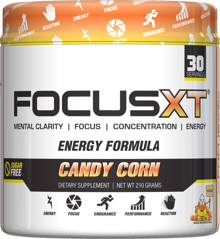
Focus XT, also by SNS, has all of the above stack ingredients plus more, making it a perfect companion for nootropics.
What's crazy is that there is already a single product that contains all of the above ingredients: Focus XT, also by SNS.
This is a very well-dosed, powdered focus enhancing drink with the following ingredients:
- Choline bitartrate
- L-Tyrosine
- DMAE (Dimethylaminoethanol Bitartrate)
- Vinpocetine
- Huperzine A
...all in a very large 9800mg proprietary blend. It's topped with an optional 200mg caffeine - there's both caffeine and caffeine-free versions.
We've tried it, the product is on point, but the flavoring is very potent, so it goes well with about 12-16oz water.
Stacking TL;DR, please?
At the end of the day, a dose of 10mg noopept alongside 250mg citicoline and your standard caffeine intake is the best place to start, and you can slowly assess from there.
Even more simple, 10mg noopept + 1 scoop Focus XT above and you're all set.
Always be very cautious of moving up any doses, and if you're using bulk powder ingredients, definitely get a quality high-precision scale.
Athletic Performance Enhancement
Some supplement companies have begun including it as an ingredient in pre workout supplements, so many users are wondering if there are any athletic performance benefits to noopept.

Not that kind of performance enhancement... but the kind that could definitely be good for sports like baseball.
The short answer is "we don't know for certain" - there simply isn't any research in this area. Generally speaking, it could possibly help, but it really depends on your activity.
Anecdotally, most users aren't experiencing anything overly impressive when lifting weights, but improvements are definitely likely in sports where quick decisions must be made, such as baseball or basketball.
If looking for next-level focus, it's worth a try, especially (once again) with choline. Choline supplements, especially citicoline, definitely seem to provide great mind-muscle benefits for weightlifters, even when taken alone.
Is Noopept Legal?
In the United States, Noopept is a completely unscheduled substance, so it is currently legal to purchase and consume. However, it's not approved by the FDA for any type of medical nor dietary purposes, so the companies that manufacture it need to be very careful about any medical claims they make.
You will need to check the compound's classification in your country or jurisdiction to make sure it's legal.
Note that on this site, we do not manufacture or sell any product - we are a price comparison engine that sends you to other retailers.
Thank you for reading
We hope you enjoyed this article. PricePlow is a price comparison site for supplements and nutrition products, and we love researching and writing about them. You may be interested in reading about nootropics such as aniracetam and piracetam on the main PricePlow site.
References
- Ostrovskaya et al. (2007). The nootropic and neuroprotective proline-containing dipeptide noopept restores spatial memory and increases immunoreactivity to amyloid in an Alzheimer's disease model. Journal of psychopharmacology, 21(66): 611-619; Doi: 10.1177/0269881106071335; Retreived from https://pubmed.ncbi.nlm.nih.gov/17092975
- Hellier, C., Holdsworth, C., McColl, I., & Perrett, D. (1972). Dipeptide absorption in man. Gut, 13: 965-969.
- Boiko, S., Ostrovskaya, R., Zherdev, V., Korotkov, S., Gudasheva, D., Voronina, T., & Seredenin, S. (2000). Pharmacokinetics of new nootropic acylprolyldipeptide and its penetration across the blood brain barrier after oral administration. Bulletin of Experimental Biology and Medicine, 129(4): 359-361.
- Gudasheva, T. Et al. (1996). Identification of a novel endogenous memory facilitating cyclic dipeptide cyclo-prolylglycine in rat brain. FEBS Letters, 391(1-2): 149-152.
- Malik, R. et al. (2007). Towards better brain management: Nootropics. Current Medicinal Chemistry, 14(2): 123-131.
- Klodt, et al. (2007). The Effect of the Synthetic Neuroprotective Dipeptide Noopept on Glutamate Release from Rat Brain Cortex Slices. Neurochemical Journal, 1(2):138-142. DOI: 10.1134/S1819712407020055
- Skrebitskii, V., Kondratenko, R., Povarov, I., & Derevyagin, V. (2013). Peptidergic Modulation of Synaptic Activity in the Hippocampus. Neuroscience and Behavioural Physiology, 43(5).
- Buschke, H. (1973). Selective reminding for analysis of memory and learning. Journal of Verbal Learning and Verbal Behaviour, 12(5): 543-550.
- Vorob'ev, K. (2002). The role of non-NMDA glutamate receptors in the EEG effects of chronic administration of Noopept GVS-111 in awake rats. Journal of Medical Science, 65(6):6-9.
- Binder, D., & Scharfman, H. (2004). Brain-derived Neurotrophic Factor. Growth Factors, 22(3): 123-131.
- Martinez, J., & Derrick, B. (1996). Long term Potentiation and Learning. Annual Review of Psychology, 47(1): 173-203. Retrieved from https://www.annualreviews.org/doi/abs/10.1146/annurev.psych.47.1.173
- Sanderson et al. (2008). The role of the GluR-A (GluR1) AMPA receptor subunit in learning and memory. Progressive Brain Research, 169:159-178. Doi: 10.1016/S0079-6123(07)00009-X. Retrieved from https://www.sciencedirect.com/science/article/pii/S007961230700009X
- Lee, K et al. (2003). Phosphorylation of the AMPA receptor GluR1 subunity is required for the synaptic plasticity and retention of spatial memory. Cell Press, 112(5): 631-643. Retrieved from https://www.sciencedirect.com/science/article/pii/S0092867403001223
- Belnik, A., Ostrovskaya, R., & Poletaeva, I. (20007). Dipeptide Preparation Noopept Prevents Scopolamine-Induced Deficit of Spatial Memory in BALB/c Mice. Bulletin of Experimental Biology and Medicine, 143(4). Retrieved from https://pubmed.ncbi.nlm.nih.gov/18214292
- Radionova, K., Belnik, A., & Ostrovskaya, R. (2007). Original Nootropic Drug Noopept Prevents Memory Deficit in Rats with Muscarinic and Nicotinic Receptor Blockade. Bulletin of Experimental Biology and Medicine, 146(1). Retrieved from https://pubmed.ncbi.nlm.nih.gov/19145351
- Gustilo et al. (1999). Evidence That Nerve Growth Factor Influences Recent Memory Through Structural Changes in Septohippocampal Cholinergic Neurons. The Journal of Comparative Neurology, 405:491-507. Retrieved from https://pubmed.ncbi.nlm.nih.gov/10098941
- Nariasawa-Saito, N., Carnahan, J., Araki, K., Yamaguchi, T., & Nawa, H. (1999). Brain-derived neurotrophic factor regulates the expression of AMPA receptor proteins in neocortical neurons. Neuroscience, 88(4): 1009-1014. Retrieved from https://www.sciencedirect.com/science/article/pii/S0306452298004965
- Parent, M., & Baxter, M. (2004). Septohippocampal Acetylcholine: Involved in but not Necessary for Learning and Memory? Learning and memory, 11: 9-2. Doi: 10.1101/lm.69104. Retrieved from https://pubmed.ncbi.nlm.nih.gov/14747512
- Uyanaev, A., & Fisenko, V. (2006). Studies of Long-Term Noopept and Afobazol Treatment in Rats with Learned Helplessness Neurosis. Bulletin of Experimental Biology and Medicine,142(2): 167-169. Retrieved from https://pubmed.ncbi.nlm.nih.gov/17369939
- Trofimov, S., Voroniva, T., & Guzevatykh, L. (2004). Early Postnatal Effects of Noopept and Piracetam on Declarative and Procedural Memory of Adult Male and Female Rats. Bulletin of Experimental Biology and Medicine, 139(6): 651-655. Retrieved from https://pubmed.ncbi.nlm.nih.gov/16224581
- Williams, A., & Woessner, K. (2009). Monosdoum glutamate 'allergy': menace or myth? Clinical & Experimental Allergy, 39(5). Retrieved from https://onlinelibrary.wiley.com/doi/10.1111/j.1365-2222.2009.03221.x/full
- Neznamov GG, Teleshova ES; Comparative studies of Noopept and piracetam in the treatment of patients with mild cognitive disorders in organic brain diseases of vascular and traumatic origin. Neurosci Behav Physiol. (2009)
- Forsgren, S; Novel information on the non-neuronal cholinergic system in orthopedics provides new possible treatment strategies for inflammatory and degenerative diseases; Orthop Rev (Pavia); 2009
- Rajendran, V; Synthesis of more potent analogues of the acetylcholinesterase inhibitor, huperzine B.; Drug Discovery Program, Department of Neurology, Georgetown University Medical Center; 2002
- Zuccato, C. & Cattaneo, E. (2009) Brain-derived neurotrophic factor in neurodegenerative diseases. Nat. Rev. Neurol. doi:10.1038/nrneurol.2009.54. Retrieved from https://www.nature.com/nrneurol/journal/v5/n6/slides/nrneurol.2009.54-pf3.ppt
- Won, D; Chapter 8; Retrieved from https://faculty.pasadena.edu/dkwon/chap%208_files/textmostly/slide58.html
- Byrne, J; Presynaptic facilitation revisited: state and time dependence. Department of Neurobiology and Anatomy, University of Texas Medical School; 1996. Retrieved from https://pubmed.ncbi.nlm.nih.gov/8551327
- Cowlishaw; Acetylcholine Synthesis; University of Bristol; 2006. https://www.chm.bris.ac.uk/webprojects2006/Cowlishaw/synthesis.htm
- Agency for Toxic Substances and Disease Registry; Center for Disease Control and Prevention. Cholinesterase Inhibitors: Including Insecticides and Chemical Warfare Nerve Agents Part 2: What are cholinesterase inhibitors? 2007. https://www.atsdr.cdc.gov/csem/csem.asp?csem=11&po=5
Noopept News on PricePlow
-
Oct 09, 2017 
YouTube Video
Optimizing Brain Performance with Shawn Wells | Podcast #2
Sign up for future Noopept news!
Click the button below to sign up for future Noopept news, deals, coupons, and reviews!
Noopept Reviews & Videos
Subscribe for more Noopept news and alerts!
Subscribe to PricePlow on YouTube, follow PricePlow on Instagram or click the button below to sign up for our latest Noopept news and reviews!
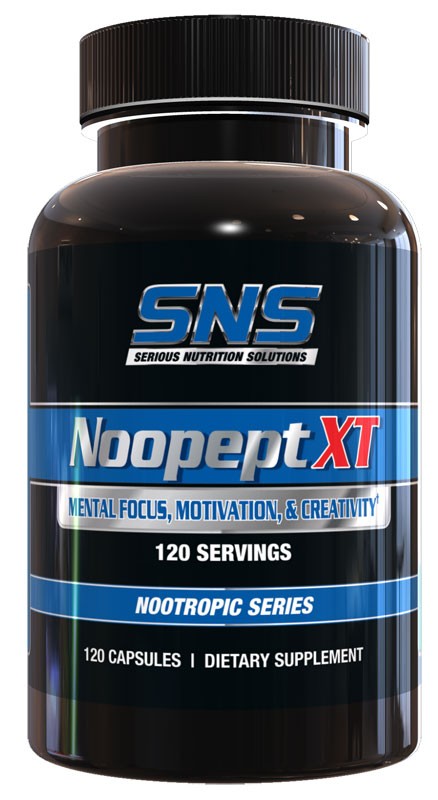
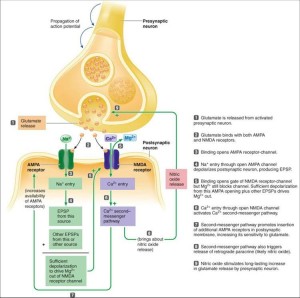
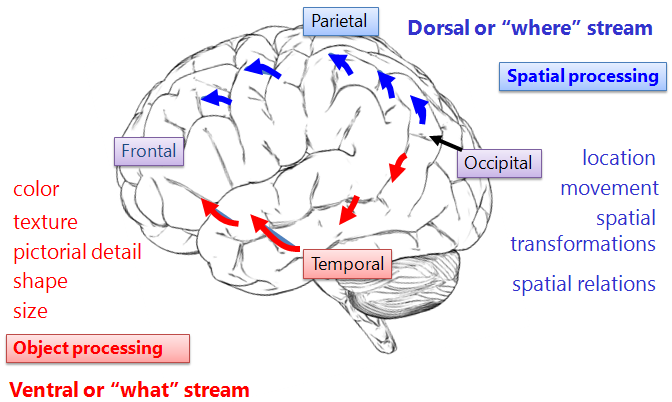
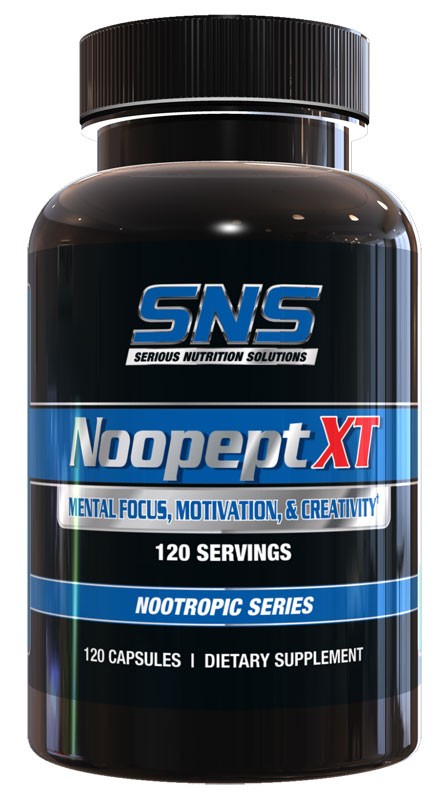
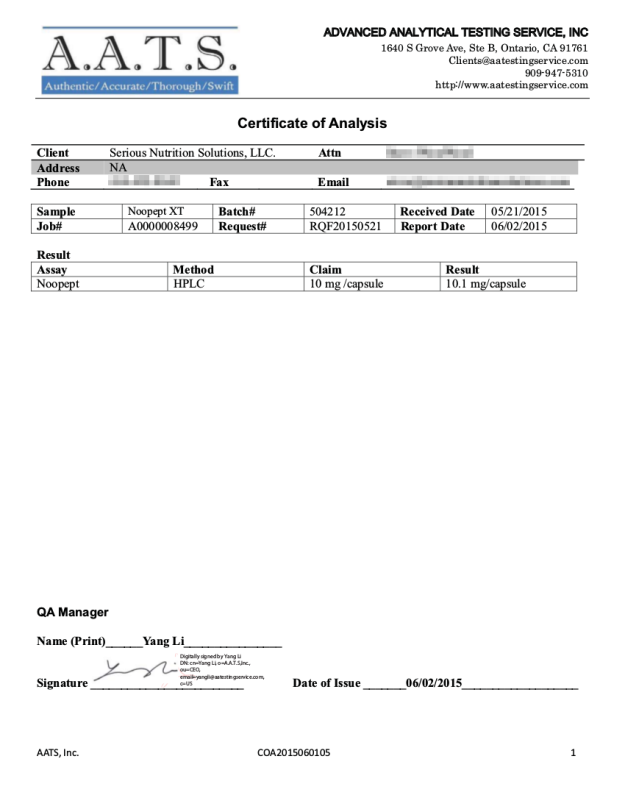
![Acetylcholinesterase breaks down our acetylcholine.<sup>[28]</sup> Huperzine A helps slow this process down.](https://blog.priceplow.com/wp-content/uploads/acetylcholinesterase-625x288.png)
